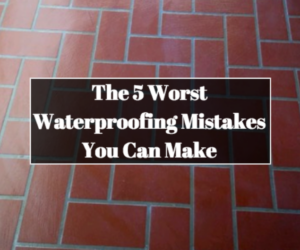
5 DIY Basement Waterproofing Mistakes That Make Problems Worse
A dry basement is essential for a healthy home. It protects your property’s value and ensures your family’s well-being. When
TB Kings is a trusted basement construction contractor, delivering high-quality basement solutions tailored to your needs. We specialize in efficient and durable construction for residential and commercial spaces.
Trusted and Approved by These Accredited Companies:






This is perhaps the most common type of basement construction. Most people consider this option because it is simple and sturdy. Poured concrete simply begins with pouring a footing for the home’s foundation. Forms are then used to hold the wall in place as they begin to dry. In turn, this results in strong basement walls that won’t cause any future water leak problems.
However, when water leaks do occur in this method, they generally develop between the joints of the walls and floor. Cracks can also form on the walls and this may cause small amounts of water to seep into the basement as time goes on.
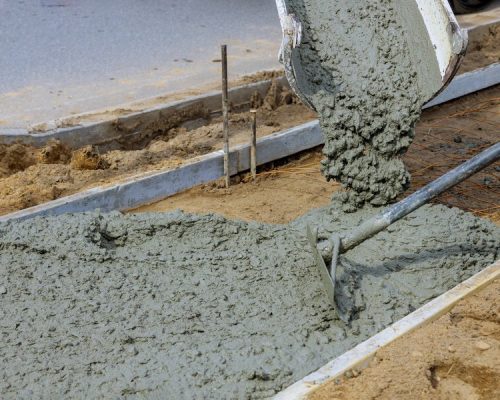
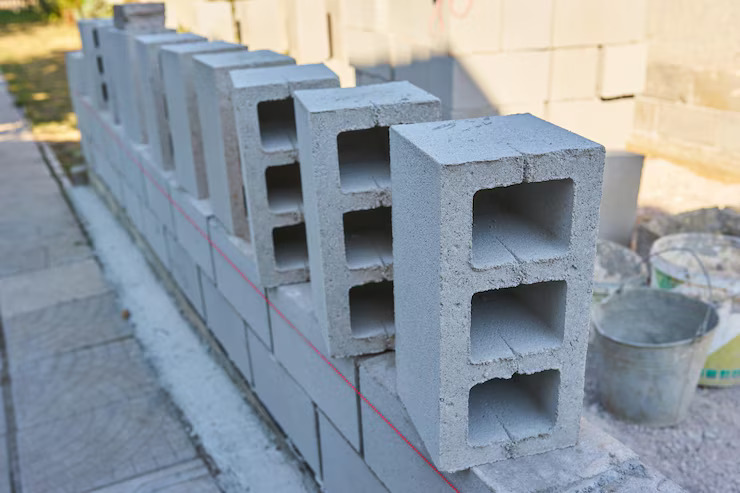
This is the cheapest option for basement construction that involves the use of masonry or concrete blocks. The walls consist of cinder blocks which can be constructed in no time to create a poured concrete wall. The strength of the wall is reinforced with steel rebar.
Concrete block walls are more prone to water leaks. In addition to the fact that water can leak from along wall and floor joints, water can also sometimes seep in through the mortar which holds each block in place.
The hollow nature of concrete blocks means that it can retain water for a long period of time after it gets in even when the soil around the block has dried up.
This basement construction option is often chosen by builders of newer residential structures who wish to save money and time. The walls are fabricated elsewhere, then brought to the building site whenever its ready to be installed.
The walls are surprisingly strong but not as popular as concrete construction. Precast panels make use of a high strength, low-water mix which makes them to be more water-resistant in the long run.
However, if water damage do occur, it’s usually starts along the joint between the walls and the floor.
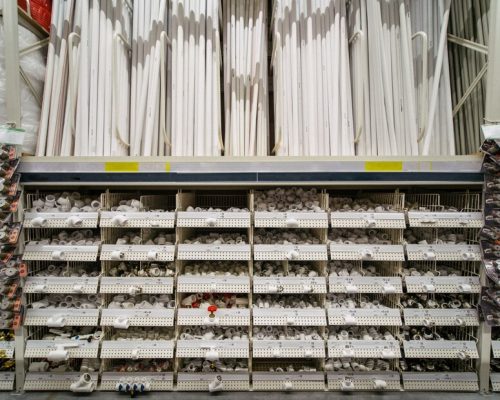
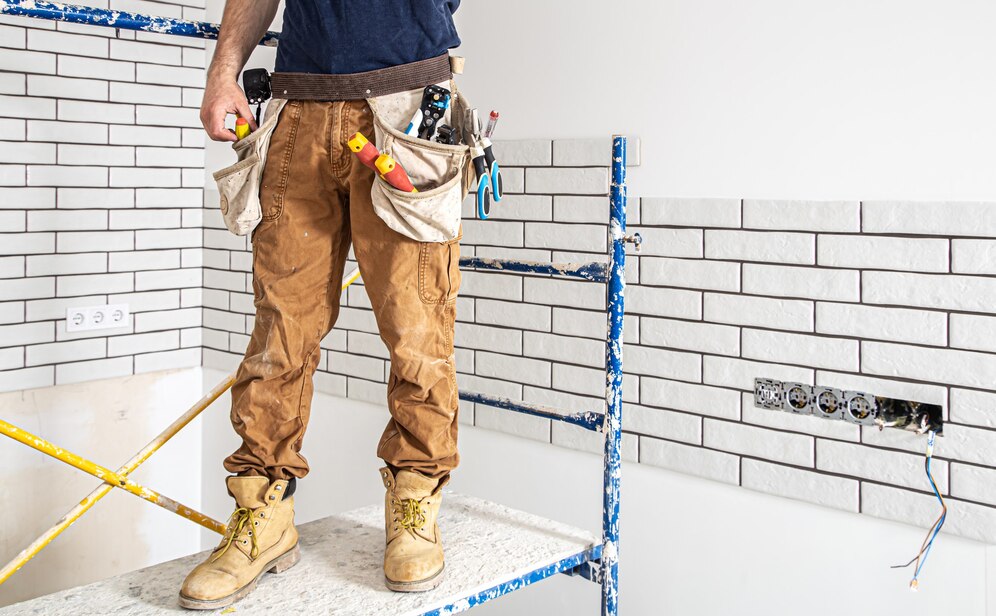
When buying an older or more historic home, you may discover that the basement has been constructed with stone or clay tile walls. Such were what was been used in the past decade and were the next option available when other materials were not available.
These walls can be very string but can also be more rudimental in nature. The biggest risk with stone or clay walls is that ground water the walls and into the basement easily.
This is mostly the case when you have stone walls with many gaps and cracks. There would need to be an interior drain system in order to address the problem.
At TB Kings, we follow a streamlined process to deliver efficient and reliable results as your trusted basement construction contractor.

Book Your Consultation: Start by filling out our consultation form to schedule a detailed inspection of your basement by our experts. We assess your needs to ensure the best solutions.
Comprehensive Assessment: Our team, experienced in concrete block basement construction, evaluates your basement’s condition and identifies the most efficient methods to address structural or waterproofing issues.
Preparation and Execution: We gather all the necessary tools and materials to start working on problem areas, ensuring all aspects of the construction or repair are handled with precision.
Detailed Waterproofing and Repairs: We address cracks, leaks, and drainage issues while waterproofing the basement entirely to prevent future water damage, ensuring long-lasting durability.
Final Inspection and Assurance: A final evaluation is conducted to verify all work is completed to the highest standards, giving you peace of mind with a strong, leak-proof basement.

At TB Kings, we take pride in offering exceptional basement construction services tailored to your unique needs and ensuring long-lasting results.
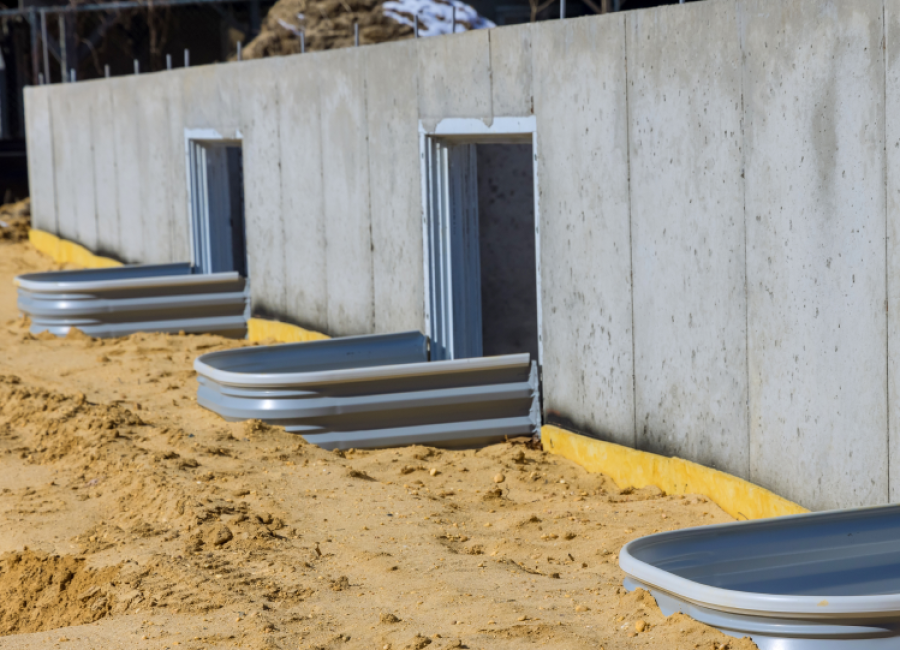
Comprehensive Basement Solutions: From waterproofing to repairs, our basement construction services cover everything, ensuring your project is completed efficiently and effectively.
High-Quality Materials and Tools: We use only the best materials and advanced equipment to deliver superior results that stand the test of time.
Expert Installation Techniques: We specialize in insulated wall panel installation, providing energy-efficient and durable solutions for modern and sustainable basements.
Dedicated Customer Support – Our team is committed to guiding you through every step of the process, ensuring a stress-free and seamless experience from start to finish.
Proven Experience in Concrete Foundations – Our expertise in concrete block basement construction ensures robust and stable foundations, ideal for all types of residential and commercial projects.
At TB Kings, we are dedicated to delivering top-notch basement construction services that ensure durability, functionality, and aesthetic appeal for your home or business. Whether you need a reliable solution like concrete block basement construction or a modern upgrade to your existing space, our expert team is here to help. Contact us today to discuss your project and take the first step toward a secure and beautifully crafted basement.
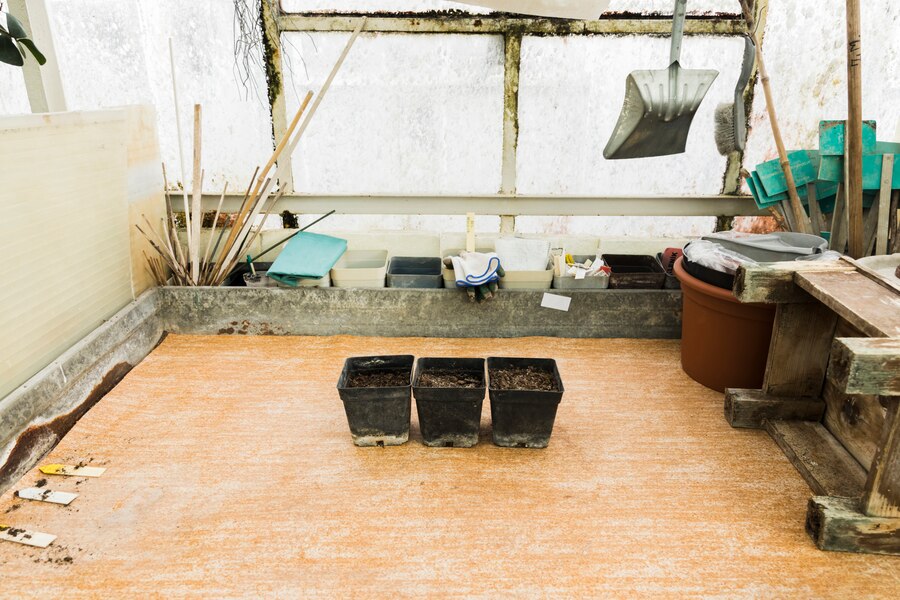
Whether you’re dealing with current water issues or want to prevent future problems, TB Kings is your trusted partner for basement waterproofing in Texas, United States.
Contact us today for a consultation and take the first step toward safeguarding your home’s foundation.
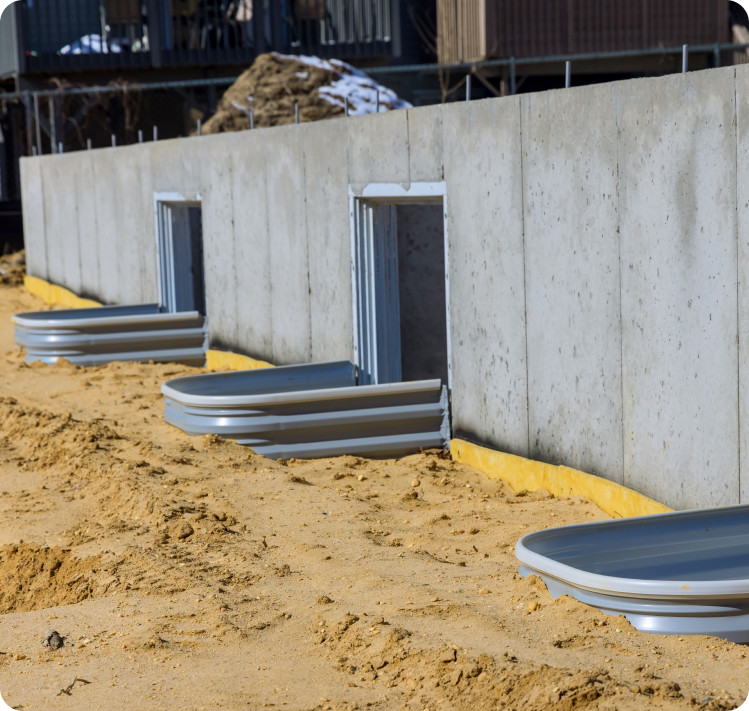
Hear Directly from Our Clients Experiences and Testimonials About Construction Solutions Services and Results
I cannot sing the praises of Basement Kings enough. They were amazing problem solvers when it came to providing my client and I with all of the options needed to make the best decision for the water remediation needs of his basement project. They consistently went above and... read more beyond on communication, flexibility and timeliness. After we met, I knew without a doubt that Willie and team were my go to, and I quickly cast out thoughts of using the other contractor that bid the job. Willie's knowledge of basement waterproofing systems and sources of the problem in ten minutes of conversation surpassed 30 minutes from the other guy. Due to the Basement King's many proficiencies with water and drainage repairs our scope of work went from the interior of the basement, to the exterior with drain replacement, waterproofing, and even sprinkler system repair. What can't they do when it comes to water? It was an amazing experience and the team is very fair on pricing without the usual nickel and diming. I've already referred Basement Kings to other trades friends and will be using them forever for these types of projects. Thank you a million times Willie and team for making my job easy and for helping us to both exceed customer expectations in the performance of what we do!
Our 1915 bungalow is complemented or cursed with a partial basement. We’ve lived with it for 30 years, but it was time to fix. We met Mr. King a decade ago when an engineer recommended work on our basement wall. Frankly, the price scared us. Ten years... read more later conditions were much worse and don’t even think about the cost. Our project replaced three basement walls. It was big. The basement changed from a dark, nasty space into a real, usable space. Super craftsmanship by some very talented folks. Mr. King is a dedicated professional and was onsite numerous times during 5 or so weeks. It was completed yesterday, but a close-out guy visited today and made final fixes and adjustments. Well done. Glad we did it. Happy with contractor.
Willie "The Basement King" has just finished the repair job on my wet basement. I had a beautifully finished basement until rainwater began seeing in. Willie and his guys did an excellent job drying out and waterproofing my basement. They also installed a sump pump underground along with... read more a professional style dehumidifier. They took care of everything in exactly the time I was told it would take. They were on time every morning and they worked until they got done what needed to be done. Willie is a very nice fellow and has a very confident attitude which actually made me feel a little better about my situation. If I ever hear of anyone having basement issues, I know who I'll tell them to call. Myself? Willie says I won't be having any more trouble with mine. Perfect.
I only have praise for Mr. King and his work on our basement. He came out, evaluated the job and sent a detailed estimate. When I called to ask questions, he took the time to address them all, in detail. He worked hard everyday until the job was... read more done, staying within the time limit estimate he gave us. Mr. King took many photos of the progress to show us the completion and he stayed within the estimate he gave us. He is extremely knowledgeable in basements and stays current of new things. He has contacted us a few times since completion to make sure all is well. I highly recommend him and am thankful to have found him.
Willie is extremely knowledgeable and removed all concerns with any future leaks. Great experience!!!
Willie King provides exceptional service for me on a regular basis. He is very professional, extremely knowledgeable and highly responsive if needed. I would highly recommend him for regular basement sump system maintenance and for complete renovation of those same systems.
It is hard to put into words, what Willie and his team pulled off in our home. We had 7ft of water in our basement when he arrived on the scene. He counseled us on water movement and management, he spent the extra time to ensure we understood... read more the entire process. Let’s talk Warranty service. When you hear Willie explain his lifetime warranty it feels unreal. Quite the contrary. With the complexity of our project he asked us to watch how things changed after his first session in the basement. We worked together to identify and attack the areas water was entering and he was able to work it all the way out of our home. Integrity Honesty Successful water eradication On time
It's been three years ago that I found The Basement Kings and they installed a sump pump and added some rock to help with drying up our crawl space. It worked like a charm, and they were very good at the work, worked hard, on time, honest and... read more good to work with which is hard to find these days! We had to replace one that failed in the first year but now two years later we're still chugging along and they will come out and inspect annually. Good guys! Thank you.
Update: Pump just needed a small adjustment. Contacted Willie and he came out personally and fixed it quickly. He backs up his promises and guarantees with solid actions! Awesome job! So grateful to have found The Basement Kings! Spoke with Willie regarding a sump pump situation. They... read more arrived within two days and installed the best sump pump system I’ve ever seen. Very professional and very high quality components. They understood exactly what we needed and did a fantastic job at a fantastic price! They went above and beyond what was requested and even did some extra work I didn’t expect. Shout out to Willie, Wayne, and Vincente! Thank you for a great job!
I was interested in purchasing a very expensive resale home with an unfinished basement but it had water intrusion and efflorescence issues that the previous homeowner was clueless about. Most Texans haven't even heard of efflorescence but it's the build-up of calcium and mineral deposits on the basement... read more wall (from hard water that penetrates the pores of concrete walls and leaves deposits after evaporating) that can be conducive for mold growth. Being from the east coast where basements are very common, I personally know how difficult it is to find a competent basement water proofing specialist even when there are tons of vendor options available. I was fortunate to find The Basement Kings who were willing to come out to East Texas, but my understanding is that they service the entire state and even Oklahoma now. The owner graciously talked to me for an hour as I interrogated his background and experience, testing to see if he actually knew his stuff. The owner was originally from the east coast also and very familiar with basement issues and related repairs. He also builds basements for new residential and commercial structures and can even retrofit them into existing buildings. The Basement Kings took several days to do the job where flat pipe was installed along/under the inside perimeter of basement where the wall meets the slab floor. The flat pipe is inclined to drain towards a bell-shaped sump basin in the corner. The shape is important to help prevent short cycling of the sump pump, otherwise the pump can wear out more quickly. The pump is hooked up to a backup battery with an alarm to help notify of insufficient power availability. The basement walls were coated with a proprietary waterproofing solution to close up the pores in the concrete/cinder block walls, and then a thick sheet of vapor barrier was installed from floor to ceiling. Finally, commercial-strength dehumidifiers were installed to help control humidity to the proper levels. For your awareness I did have to cover additional expenses like paying for an electrician to put the sump pump on a dedicated circuit, and also an irrigation company to install a French drain on the exterior of the basement's walk-in entrance. The repair effort was expensive, but there is comfort in knowing that the quality of work performed by The Basement Kings was high and 18 months later the results are holding up well.
The team of basement king was very professional and clean with their work when they water proofed my crawl space Mr. Is top notch
Great business! Super quick to find and fix repairs around the basement. Would definitely recommend them for basement maintenance.
Answer my question with good understanding.
I I had major drainage problems with a leaking basement. Willie has spent 3 weeks re-engineering my whole basement and as today we're almost done. My brother is structural engineer and he and Willie came up with an amazing plan. Willie is prompt, professional and... read more smart as anyone I know. He cleans up every night and put all his tools away. If you need the BEST you need Willie. FYI my brother needed some information on a product that was made in Canada. The salesperson ask who my contractor was and my brother said Willie King. The salesperson started laughing and said “Willie King is our go to guy. He the best in the business”. If you want it done right you need WILLIE!!
I needed information on a service they couldn't provide but they generously guided me on what should be done and referred me to a reasonably priced business that could.
We engaged Basement Kings for crawlspace inspection and cleanup services. Mr King did a wonderful job in explaining the options and which services would remedy the issues we had. Once hired for the services, they were prompt, professional, and diligent in performing the work on site, and cleaning... read more up each day. Would highly recommend Basement Kings for any crawlspace inspection and/or service.
It prevents heat loss, reduces energy costs, and creates a moisture-resistant barrier. This method also helps protect the basement walls from condensation and water damage over time.
Yes, permits are typically required for construction. TB Kings handles all the necessary paperwork to ensure your project complies with local regulations.
We build standard, walk-out, and daylight basements. Each type is tailored to your property’s layout and your preferences for functionality and design.
A basement construction contractor handles everything from designing and building new basements to remodeling and waterproofing existing ones. TB Kings offers comprehensive services for both residential and commercial projects.
Yes, you can. TB Kings assesses the feasibility of adding a basement to your property, offering solutions that fit your needs and meet structural safety requirements.
The timeline depends on project complexity and site conditions. On average, it can take a few weeks to several months, with TB Kings ensuring timely delivery.
Yes, we specialize in insulated wall panel installation, offering tailored solutions to ensure your basement remains warm, dry, and energy-efficient all year round.
Costs vary depending on size, materials, and design complexity. TB Kings provides transparent quotes after an initial consultation and site inspection.
We adhere to strict safety standards, use high-quality materials, and employ trained professionals to ensure a secure construction process.
Our team conducts soil tests to determine stability and suitability for basement construction. We design solutions that work for your property.

A dry basement is essential for a healthy home. It protects your property’s value and ensures your family’s well-being. When

Water damage poses a significant threat to your home’s foundation and basement integrity. Each year, countless homeowners face costly repairs
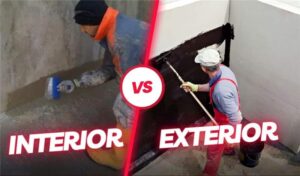
Protecting your home’s foundation from water damage is one of the most important parts of home maintenance. A properly waterproofed